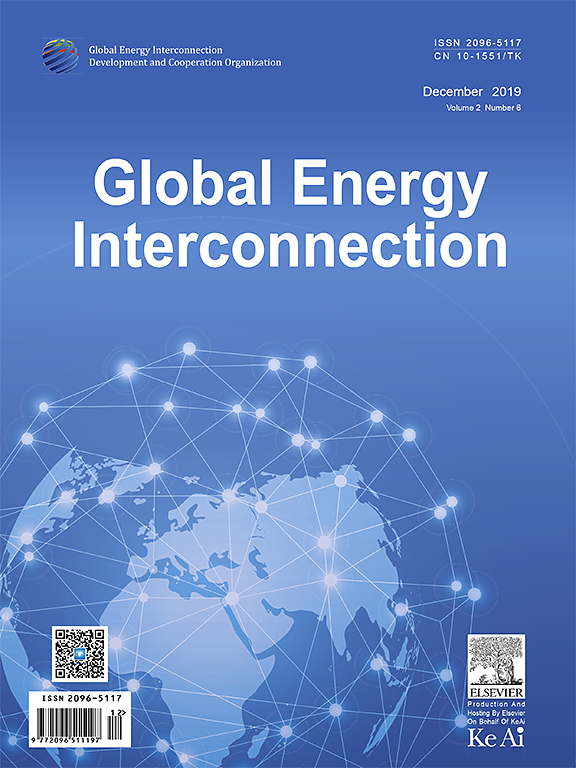Recommended articles:
-

-
Global Energy Interconnection
Volume 3, Issue 1, Feb 2020, Pages ii
Message from the Guest Editor-in-Chief
Keywords
Abstract
Qili Huang, an academician of the Chinese Academy of Engineering, is the consultant of State Grid Corporation of China and the chairman of the Academic Committees of the State Key Laboratory of Alternate Electrical Power System with Renewable Energy Sources, the State Key Laboratory of Power Grid Safety and Energy Conservation, and the State Key Laboratory of Coal-based Clean Energy.He has long been engaged in scientifi c research in the fi elds of combustion, applications of engineering achievements, and technical management of power companies.His main research areas include clean and efficient coal-fired power generation, renewable energy power generation, energy conservation and environmental protection, and energy development strategies.He has put forward reference recommendations for the country in the areas of large energy systems such as renewable energy development, clean coal utilization, and comprehensive and coordinated utilization of multiple energy sources.
Weisheng Wang, a professorate senior engineer, is the director of Renewable Energy Research Center of China Electric Power Research Institute(CEPRI), executive deputy director of the State Key Laboratory of Operation and Control of Renewable Energy & Storage Systems, senior member of the Institute of Electrical and Electronics Engineers(IEEE), and member of the Chinese Society for Electrical Engineering(CSEE) JPES Editorial Board.He has long been engaged in scientific research in the fields of renewable energy power generation and grid integration.He has hosted and participated in numerous national science and technology projects, international cooperation projects, and major engineering consulting projects.The research results from these projects have been widely promoted and put into practice.
At present, a new cycle of energy technology revolution coupled with economic and industrial reforms has come to a historical convergence.Consequently, the international energy supply system and industrial division of labor are being reshaped.The large replacement of fossil energy with clean energy is a critical indication for the evolution in the energy structure from the supply side.In this context, global clean energy represented by hydropower, wind power and photovoltaic power generation is developing rapidly, and the installed capacity has reached record high.
However, renewable energy power generation represented by wind power and photovoltaic power generations are random, fluctuating, weakly-supported, and with low anti-disturbance performance by their essential characteristics.As the scale of renewable energy generations continuously expands in the future, their proportion in the energy mix will correspondingly increase, which will have a profound impact on the planning and operation of power systems, and pose great challenges to power balance, safety and stability.Under the scenario of high proportion of renewable energy, it is necessary to future improve the power system flexibility through grid interconnection, multi-energy complementation, etc., while applying technologies such as energy storage and the Internet of Things, to boost the grid integration performance, and ultimately achieve the friendly and effi cient utilization of renewable energy.
Considering the above trends, Global Energy Interconnection has organized a special issue titled “Key Technologies of Renewable Energy Integration”.This special issue contains 10 articles from power grid companies, well-known research institutions and universities, including State Grid Corporation of China, Japan Renewable Energy Research Institute, China Electric Power Research Institute, Chinese Academy of International Trade and Economic Cooperation, Algeria Biskra University, etc.The above articles are mainly related to the fi elds of large-scale clean energy development and utilization, and grid-connected operation control.
This special issue covers a variety of topics.First, from a macro perspective, it analyzes the similarities between China and global renewable energy development, and puts forward the inspiration and suggestions for building Global Energy Interconnection.Then, from a micro perspective, the technologies relevant to development and utilization of clear energy, as well as the planning, operation and control strategies for grid integration, such as hydropower base development, desert photovoltaic power generation system, offshore wind power generation system, assessment and planning of grid interconnection in different regions, clean energy grid-connected safe operation, clean energy and energy storage coordinated control are analyzed.
We believe that this special issue along with the presented papers will help to advance the global science and engineering community’s exploration and understanding of key technologies of renewable energy integration, and consequently promote the rapid and sustainable development of clean energy.
Fund Information


